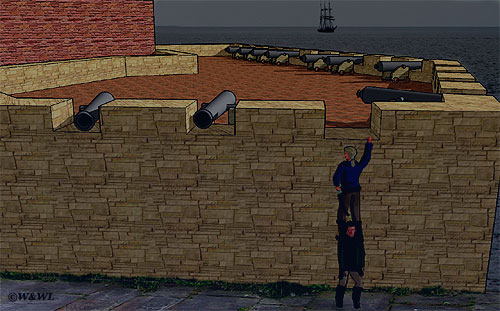
When John Paul Jones attacked Whitehaven in 1778 there were two batteries of guns to defend the town against attack from the sea. Within 6 months after the attack the number of batteries had increased to 6 and their location at either side of the harbour and on the headland made a formidable defence.
The Old Fort and the Half-moon or Lunette battery seem to have been the only major defences at Whitehaven when John Paul Jones attacked in 1778. According to him these contained about 30 guns and we know the largest of these were 42 pounders at the Old Fort and several 24 and 18 pounders probably supported these. The 42 pound guns were truly massive powerful weapons for their day capable of firing an iron ball of that weight over a mile, using 14lb of black powder as the charge, with enough force to smash open a ship’s hull. It was very cold for the time of year and in the early hours of the morning, so the guards had retired to the guardhouse at the back of the fort. They were thus easily surprised and overpowered.

However, Whitehaven was not a sleepy town but a thriving port that was already deeply involved in the war with America. Many ships had already been lost to privateers or pirates. In June of 1777 several local ships were lost to Commodore Lambert Wickes in the Reprisal accompanied by Johnson in Lexington and Nicholson in Dolphin which were causing havoc to the merchant ships in the channel between Scotland and Ireland. Whitehaven lost 4 ships in as many days :-
19th June - The Brig - Expedition, William Braithwaite – sunk as it headed to Norway.
20th June – The Sloop - Jason, Joseph Hutchinson – captured heading to Peterborough
21st June – The Bark - John & Thomas, John Yowart – captured taking timber from Norway to Dublin
22nd June – Collier Brig - Richard, Thomas Ledger - sunk taking coals to Dublin
Commodore Wickes sent 110 prisoners aboard one of the captured ships to Whitehaven. Much alarmed, expresses were sent from Whitehaven to the Admiralty asking for the protection of the Navy and as a result two warships and a sloop were sent. Also two companies of militia were brought to Whitehaven and one each to Workington and Maryport.
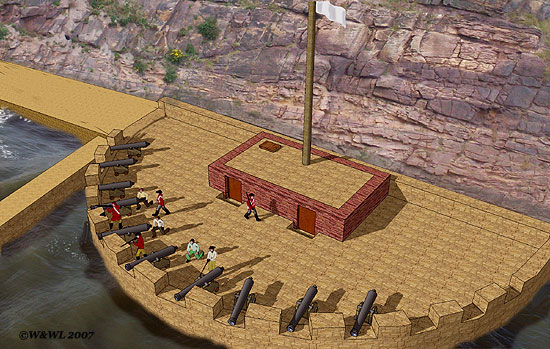
The Lunette battery had 8 guns of the 32-pounder calibre. These were serviced and mounted on their carriages expressly for action against these pirates (American privateers) in the channel. Several smaller guns probably supported these. Ironically the guns offered no resistance against John Paul Jones the following year because nobody was manning them.

John Paul Jones took them out of action by ‘spiking’ – hammering a spike into the firing hole at the breech where the fuse lit the charge. Either the spiking wasn’t complete or it was easily remedied because as he rowed back to the ship two guns fired out from the half-moon battery. The chance of hitting such a small craft with unpractised men to crew the gun was negligible and Jones laughed as the shots flew wide of their mark.
The subscription for the defences of Whitehaven was very successful and within 2 weeks a new battery was made on the north side of the harbour. It was on a small hill known as Jack-a-Dandy, which gave its name to the battery. Initially 4 guns of 42 pound shot were placed there with another 6 of the same weight to be brought from the other batteries. This would make 10 of these large guns from the other batteries – if they left 10 of the same at each of those batteries this would make a total of 30 – proving Jones’s claim.
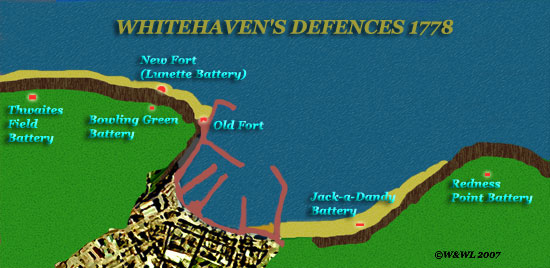
By September the number of batteries had risen to six. Two of these were placed on the brows above the half-moon battery to give it cover and prevent any sea-borne attack from around St. Bees head. The other battery was placed on the brows at Redness Point preventing attack of the bay from the northern side. The command of the batteries was given over to Colonel Moore of the Westmoreland Militia and the regulating Captain Thomas Pemble, Esq. Although the guns were mounted a 100 men were still working on completion of the parapets.
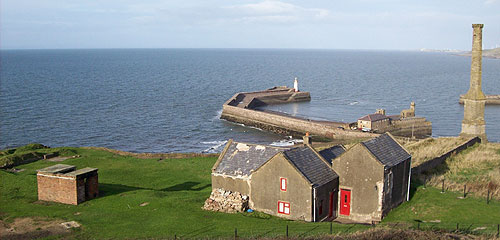
Three 42 pound guns went to the Redness battery and another 3 went to the Bowling green battery whilst the Thwaites field battery probably had 24 pounders. In November another 10 guns arrived supplied by the government and these were the smaller calibre 18-pounders. These were still capable of penetrating 1 foot of oak at 1000 yards with only a 5lb charge.
The year after the raid the brows batteries were demonstrated to the public. Two shots were fired at a ship a mile away. The first shot fell short but in line whilst the second nearly hit the target much to the satisfaction of the onlookers.
The 1811 directory describes the total number of guns as 98 including 12 of the great 42 pounders and 18 of 36 pounds. The Duke of Wellington later recalled the guns except for some at the fort and half-moon battery.
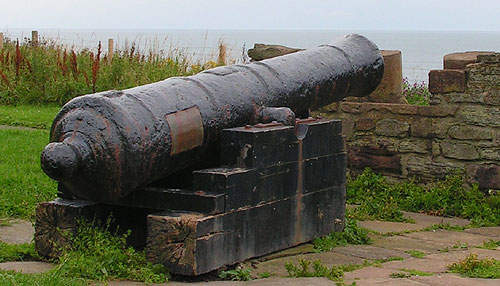
The gun known as Long Tom mounted on a replica carriage is a 32-pounder or demi-cannon. This was dug out of the shingle behind Tom Hurd’s rock in 1963. It was probably in use at the half-moon battery. However, in 1872 a large part of the cliff gave way and crumbled down onto the half-moon battery. It seems likely the gun was involved in this incident and hence buried in the sand rather than melted down or returned to the armouries like the rest.
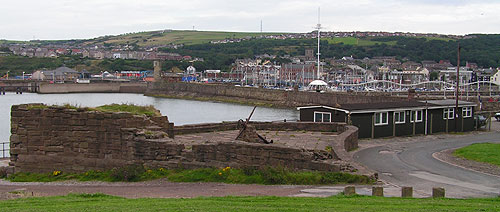
Part of the fort attacked by John Paul Jones still stands although the road to south beach cuts through the back of it and a 19th century lime kiln was built out of its masonry and now adjoins its north side. An old anchor has been mounted at the centre. Little idea can be gained from the remains of its workings but an archaeological dig before the road was built in 1979 indicated the floor plan that validates the plan shown on the 1790 map by John Howard. About hundred years earlier the harbour master had found 30 bayonets two cannon and flint musket at the fort.
It is interesting that the most important manufacturer of cannon in Britain at that time was Whitehaven merchant Anthony Bacon who along with William Brownrigg had set up an iron furnace and gun foundry at Merthyr Tydfil in Wales. It is quite possible that some of the guns at Whitehaven came from his works.
©W&WL 2007